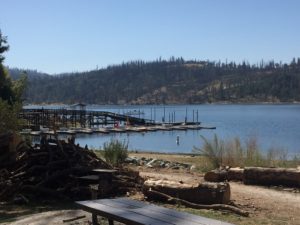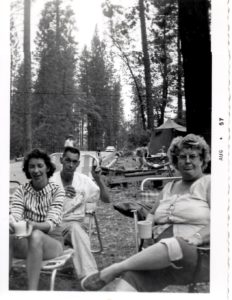Journey to Certification, Part 3:
Defining moments come to everyone, probably more often than we realize. One of those defining moments came for me during our visit to Minnesota for the Olson Family Reunion in July, 2014. The journey with my sister B. and Aunt L. was so much fun! Seeing my aunts reunited was heartwarming. Reconnecting with cousins we haven’t seen for years (some for over 50 years) was a true blessing. But it was one cemetery visit, with memories of burying our other sister still fresh in my mind and heart, that brought it all home for me. I understood at that moment what I was to do with the rest of my life.
I had been dragging my sister B. around for a week, taking her to every cemetery I knew of where ancestors were buried. She helped me walk up and down rows and rows of markers trying to find the names on my lists. Our travels took us from Albert Lea, MN, to Sioux Falls, SD, and then south to Sibley, IA. Of course, there was an agreement made my sister that, if she was going to go with me to cemeteries, then I was going to take her to Falls Park while visiting Sioux Falls. Not a problem. Aunt L. accompanied us on that excursion, too. It was a fun day for all.
One of our last cemetery visits took us to Sibley, IA. Before leaving on our road trip, I found the cemetery where our grandfather, Peter Brinkman (1890-1914), was buried. We never knew him. He died two months before our father was born. According to Google Maps, the cemetery was south of Sibley, out in the middle of a corn field. I wasn’t even sure whether it still existed. It was called the Hope German Presbyterian Cemetery.
Our first stop in Sibley was at the Chamber of Commerce. When asked about this cemetery, the woman in the office said she had never heard of it. She sent us to the public library, just a block away. We had no idea what we would find there.
The main librarian hadn’t heard of the cemetery, either. However, they just happened to have a binder of a compiled list of all the cemeteries in Osceola County, recently donated to the library. The man who compiled the work listed the name of every person found, dates on the inscription, the cemetery in which they were interred, and the town where that cemetery was located. (There may have been other pieces of information, too, which I don’t recall now.) She brought out the binder and let us look for our grandfather’s name.
“There! There it is! Oh, my gosh!! I can’t believe it! Hope Cemetery! We found him, B.! We found him! The cemetery does exist!” I was so excited, I think my heart took a leap or two!
There was another young woman helping at the counter. When I showed her the entry for our grandfather, she said, “I think I have been to that cemetery with my grandmother.” She went straight to the computer and printed out directions. Almost there, I thought, an anxious lump growing in my throat.
Well, the drive to find the cemetery was interesting, to say the least. The directions wanted us to turn off of a nice paved road onto a dirt field road. I started to turn, determined to get to our destination. Being a country girl married to a rice farmer, driving on field roads didn’t intimidate me. However, we didn’t make it more than 50 feet, or so, and there was a huge mud puddle. A thunderstorm had come through and dropped a bunch of rain for two days. Next to the puddle was a sign to the effect, “Enter at your own risk.” We decided, since we were not in a 4-wheel-drive vehicle, it would be best to heed the warning. There had to be another way to get to the cemetery. Thank goodness for GPS!
After backing up, we were back on pavement, at least for a while. Eventually, we found ourselves on a public dirt/gravel road, obviously maintained by some road crew. While I drove, my sister concentrated on the Google Map and the car’s GPS map. Finally, she says, “We are very close.” We passed a cornfield, a long row of trees, and a white farmhouse with a sign that read “Olson.” All of a sudden she said, “We missed it. We have gone too far.” Slowly, I backed up from the corner, past the farmhouse, past the row of trees, slower and slower. Then, I stopped.
There, between the cornfield and the trees, was a road, covered with grass/weeds, green from the fresh rain. Our eyes barely caught sight of something at the end of the road–a cyclone fence. Could that be it? I backed up just a bit more, and there it was. Beyond the fence we saw headstones! Heart racing, I drove slowly to the edge of the fence. We got out and looked around.
The cemetery was not very big, maybe 30 or 40 headstones at most. Many of them had the surname of Frey, another ancestral name on our father’s side. We walked around for a short time, then my sister proclaimed, “Oh my gosh! We found it! He’s here! I don’t believe it.” We stood in front of our grandfather’s headstone, the closest we had ever been to him in our lives, held each other, and cried. They were tears of joy in the discovery, but also tears of sadness. We were sad that we never knew him, but even more, we were sad that he never knew his son. How much our father needed him as a child! We just stood there for a while, thinking out loud, relishing the experience, and took lots of pictures.
That was my defining moment. That was the moment I knew that I had to pursue genealogy with a purpose. I needed to find out about my ancestors more deeply. Who they were. How they lived. Where they came from. I wanted to learn more about genealogical research. I decided then and there that, once back to California, I would turn this dream into a reality. I didn’t know how, but I knew this would be my new path in life–a life-long passion turned into a new career, possibly.
TO BE CONTINUED
 (August, 1957– I was not yet five. The two boys with me in the picture were sons of one of my parents’ friends who were camping with us.)
(August, 1957– I was not yet five. The two boys with me in the picture were sons of one of my parents’ friends who were camping with us.)



